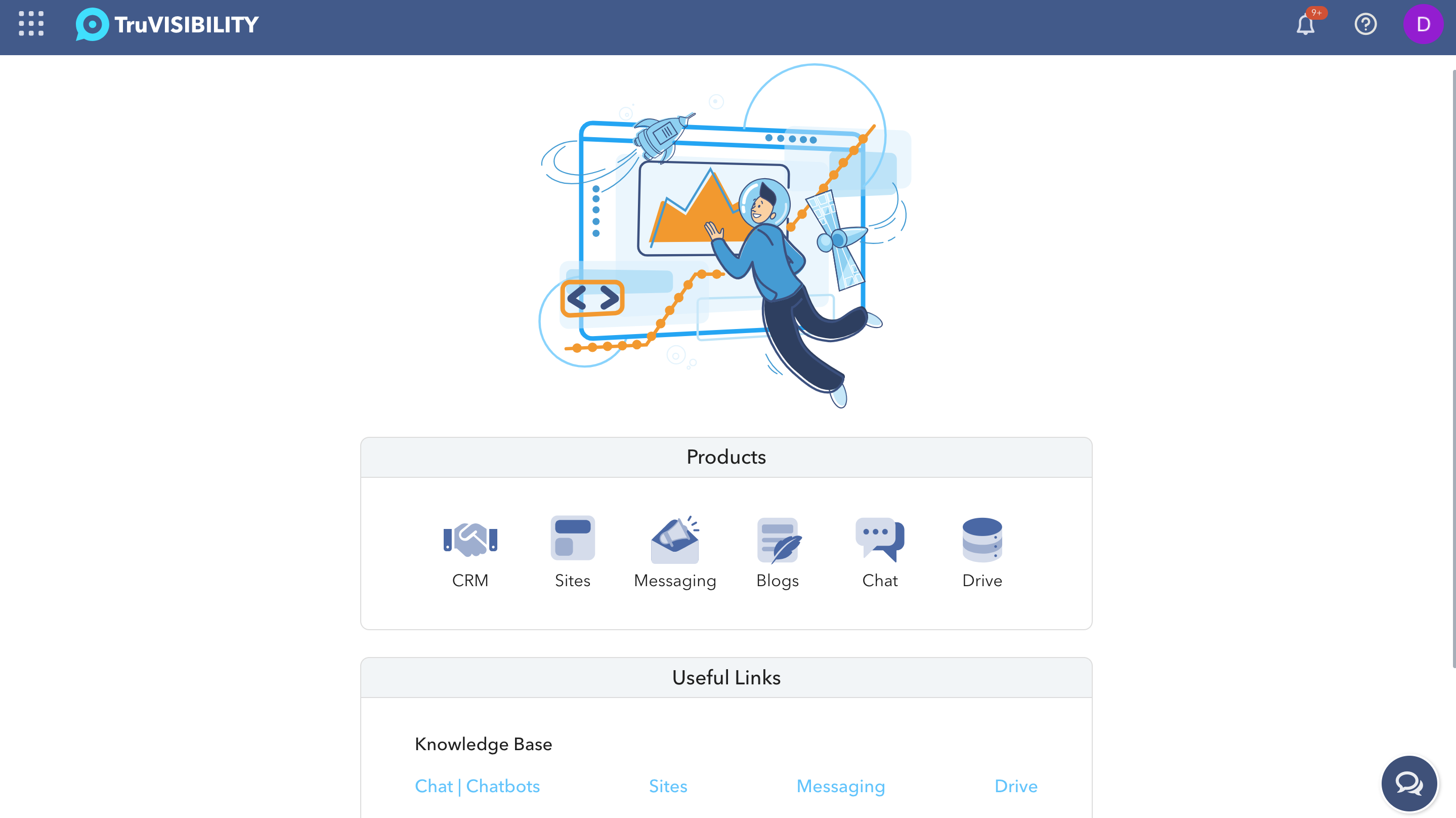We live in an internet-driven world, and it means that now your small business can be visible to a global audience. But, as more businesses go online, they need to keep getting better to stay ahead. Sometimes, it might even call for a complete overhaul of existing online marketing strategies. One efficient way to do this is by implementing a customer relationship management (CRM) system. Statistics says that small retail businesses saw a 30% increase in sales after overhauling their online marketing with a CRM. Want to be one of them in 2023? Read on to know how!
Table of Contents
- What Does CRM Mean?
- Steps to Overhaul Your Online Marketing with CRM
- The Best CRM for Your Small Business
- Conclusion

What Does CRM Mean?
CRM is a software that manages your interaction with leads and customers. It helps automate customer-related data entry (from essential info like their name, email, and phone number to purchase history), store, and analyze it. By documenting every interaction and activity of each lead and customer you will have the complete picture to use for marketing, sales, customer service and technical support. Thus you can automate and enhance your online marketing efforts, build stronger ties with your customers, and increase sales.
Steps to Overhaul Your Online Marketing with CRM
Putting a CRM in your business may seem tough. But don't worry, we'll help you understand how to do it now.
Choose the Right CRM System
You should compare features such as scalability, customization, and integration. And the last one, probably, is the most important thing, because nobody wants to waste time trying to make different apps work together. The best option here is to choose CRM which is part of an all-in-one marketing suite. Thus you will be sure that it's already integrated with other applications, such as chatbots, email marketing apps, website builders, etc.
Also, All-In-One Software Solutions Are Better Than Utilizing Multiple Software Solutions
Implement a CRM into Your Marketing Strategy
Once the right CRM is in place, integrate it into your marketing strategy. The first thing to do is to shift your customer list to CRM. If you've been using Excel and entering customer data carefully, then this process should not be too difficult. You can just upload your database in XLSX or CLV.
Train Your Team on the New CRM System
The next step is to ensure all team members are trained on how to use the new CRM system. This will likely involve a series of training sessions or workshops. Prepare self-service content such as user manuals and FAQs. You can even create a chatbot for internal use to make it easier for the team to find answers to their questions.
It is important to establish a protocol for entering and updating customer data to maintain consistency. Special attention should be paid to data access — decide who can see or change customer data in the team.
Leverage CRM for Targeted Marketing
Once everyone is comfortable with the system, it's time to start leveraging its capabilities to enhance your marketing strategy. One of the key benefits of a CRM is its ability to segment customers based on various criteria, such as purchase history, demographics, and engagement levels. This allows targeted, or personalized, marketing campaigns that are more likely to resonate with each segment. In short, market the right Message at the right time to the right people
For instance, you might create a campaign specifically for customers who haven't made a purchase in the last six months, offering them a special discount to re-engage them. Or you could target frequent buyers with a loyalty program invitation. Or, just offer a discount to everyone who has a birthday.
Also, Unlock Massive Sales with a CRM
Analyze Campaign Results and Customer Interactions with CRM
Over time, you'll start to see patterns in your CRM data and pay special attention to tracking customer interactions across multiple channels. Then, if something isn't working, just be brave and change your approach, even if you've invested a lot of money into it.
Let’s say, you have an ongoing promotional offer. You've shared this offer through an email campaign, posted about it on your Facebook account, and also have banners on your website. You've been spending a lot on social media ads, but they're not giving you the results you need. It might be hard to accept, but maybe social media just isn't the best way to reach your customers.
On the other hand, you might find that your emails are getting a lot of opens and clicks. This could mean that your customers prefer to hear from you via email. So why not shift your budget away from social media and put more into email marketing?
Or perhaps it turns out that a lot of customers are visiting the promotional page on your website directly. This might suggest that your website's SEO is effective, and people are finding your offer through search engines.
If you find that a lot of people are visiting the promotional page on your website directly, this might suggest that your website's SEO is effective, and people are finding your offer through search engines. So why not invest in SEO more?
Maintain Current Customer Data
Remember to regularly review and update the data in your CRM to ensure that your marketing efforts are based on the most current customer insights. Outdated or incorrect data can lead to errors, which can impact your marketing efforts and customer relationships.
The Best CRM for Your Small Business

Now, of course, you can go online to spend time looking for the best CRM system. But we have the best offer — our TruVISIBILITY CRM application. It is the core of the TruVISIBILITY Suite — an all-in-one marketing software platform. This means that CRM integrates with other online marketing applications that make up the platform, so you can not only manage your customer-related data, but also create rule-based and AI-powered chatbots, build websites with blogs, and launch email marketing campaigns.
TruVISIBILITY CRM is extremely user-friendly, so your team won't spend much time on training. Plus, it allows them to work together through access to the same applications and databases.
Conclusion
Now you know that overhauling your online marketing with a CRM is simple! A CRM gives useful information about how customers behave, helps divide customers for focused marketing, and keeps track of customer activities across different platforms. But, a CRM works best when the data is kept current. Regularly adding new customer data to your CRM makes sure your marketing plan is always based on the latest information. This can lead to better campaigns and help your business grow.
So isn't it time to start using CRM?
Want to receive more articles?
Sign-up for our weekly newsletter to receive info that will help your business grow



